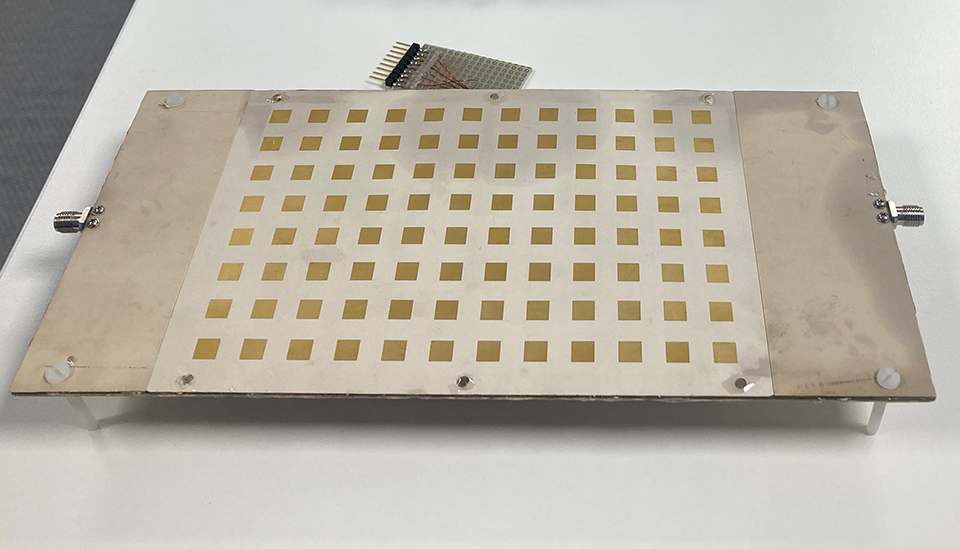Used to detect air threats, it supports military operators in scenarios involving conventional aircraft and mini and micro unmanned tactical systems
CATEGORY: Technology
PROJECT NAME: Radar Processor on Chip
BUSINESS AREA: Electronics
DESCRIPTION
Development of the TMMR (Tactical Multi Mission Radar) sensor, an AESA (Active Electronically Scanned Array) band C radar for the detection, classification and tracking of small, fast-moving threats in the air. This fully digitised radar will provide integrated support for the armed forces, guaranteeing complete, immediate situational awareness in scenarios dotted with land and air systems, such as mini and micro unmanned tactical systems.
INNOVATION
The TMMR is easily transportable and may be used in rapidly evolving situations, as it weighs less than 50 kg, is small in size and employs state-of-the-art technology consuming very little energy. These features and its “all-in-one” design offer operators the ideal combination of high performance and ease of use. The key difference lies in the use of RFSoC technology, permitting allocation of all the features of a radar processing chain to chips, which take radio frequency samples, analyse the signal, extract data, and recognise and classify targets.
TEAM
Francesco Auriemma (leader) - Engineer - Bacoli (Fusaro), Naples
Daniela Tedesco - Software Engineer
Marianna Pizzetti - Software Engineer
Maria Francesca Micanti - Software Engineer
Simone Bartolini - Software Engineer
Gennaro Migliaccio - Software Engineer
Siriana Vannini - Hardware Engineer
Luisa Posani - Software Engineer
Stefano Borra - Software Engineer
Emanuele Leva - Firmware Engineer
Where did the project take place?
The team members have a background in engineering in the Electronics for defence division, and are distributed among numerous sites: Napoli Bacoli/Fusaro and Napoli Giugliano (Naples), Roma Tiburtina (Rome), Abbadia S. Salvatore (SI), Firenze Campi Bisenzio (Florence). The Bacoli/Fusaro site nearNaples (more than 350 employees, 314 suppliers and 8564 people working in related industries) is home to the Electronics division, specialising in the production and integration of advanced radar systems for naval and terrestrial, civil and military applications, including AESA technologies, as well as in testing radar antennas with 4 Field Test Ranges (Near and Far).
How do you think your project can benefit Leonardo’s innovation ecosystem (both within and outside the company)?
The solution can be applied to all band C radars (in the Kronos family), offering the benefits of radar architecture simplification and lower costs, as all the products are on a single board. This approach opens up the way for experimentation with innovative solutions also for other types of sensors.

Based on a solid statistical analysis, the technology allows to mitigate the "Crop Circles" in real time, improving the image quality of the uncooled detectors.
CATEGORY: Technology
PROJECT NAME: Crop circle mitigation algorithm
BUSINESS AREA: Leonardo DRS
DESCRIPTION
As the bolometer structures have become smaller, the detector window moves closer to the bolometer causing the potential for a blemish or artifact in (or on) the detector window resulting in a noticeable image artifacts. These image artifacts are fittingly known as “crop circles”. The purpose of the crop circle mitigation is to remove/mitigate the crop circle artifact without impacting the form, fit, or function of the camera module; the crop circle mitigation runs in real time (zero-latency) without introducing additional artifacts.
INNOVATION
Based on solid and sound statistical analysis, the crop circle mitigation algorithm creatively formulates both non-uniformity data and real-time scene contents in an elegant but simple mathematical framework. At low computational cost, it instantly cancels out crop circles in each image dynamically while preserving scene contents without introducing any latencies or side effects. It even removes lens vignette artifacts. To our knowledge, this is the first hybrid solution of its kind to tackle and solve such a technology challenge.
TEAM
Elizabeth Findley (Leader) – System Engineer – Melbourne, FL (USA)
Rustin Allred (Leader) – System Engineer – Dallas, TX (USA)
Haiying Liu – System Engineer – Melbourne, FL (USA)
Steve Marteney – System Engineer – Melbourne, FL (USA)
Eric Minner – Electrical Engineer – Melbourne, FL (USA)
Christopher Reed – Project Engineer – Dallas, TX (USA)
Kevin Macauley – Project Engineer – Dallas, TX (USA)
Christopher Parten – Applications Engineer – Dallas, TX (USA)
Where was the project developed?
The project was developed at two Leonardo DRS sites in the United States: Melbourne (Florida) which houses the production lines dedicated to electro-optical and infrared systems and terrestrial electronics; and Dallas, Texas, which designs and manufactures infrared sensors and subsystems that support the aviation, ground vehicle, military and commercial markets. Leonardo DRS employs a total of over 6,700 workers.
How do you expect your project to benefit Leonardo's innovation ecosystem (both internally and externally)?
Crop Circle Mitigation is a beginning to improving the video quality of our uncooled detectors. Improvements to this algorithm, new applications such as solar exposure mitigation, and applications for new issues will result.

Machine Learning algorithms permit specification of the details of flight regimes for the helicopter fleet, to define their parameters and assess fatigue and performance.
CATEGORY: Technology
PROJECT NAME: Effective monitoring of helicopter use through Machine Learning approaches
BUSINESS AREA: Helicopters
DESCRIPTION
The project offers advanced analytic approaches in the context of Machine Learning (ML) algorithms to permit efficient automatic recognition of flight conditions for a helicopter fleet on the basis of analysis of the time stories of the principal flight parameters recorded on board by dedicated systems (HUMS). The final goal is to obtain an effective assessment of the fatigue of structural components of the fleet being monitored through definition of its real use.
INNOVATION
The proposed solution, based on a combination of supervised ML algorithms particularly appropriate for big data analysis, permits recognition of flight regimes in a more general, efficient way than classic physical modelling algorithms. The solution also introduces the possibility of distinguishing among mixed manoeuvres, and offers the prospect of ongoing performance improvement in terms of accurate manoeuvre recognition due to the growing availability of new data.
TEAM
Andrea Baldi (Leader) – Aerospace Engineer – Cascina Costa di Samarate (VA)
Ugo Mariani – Engineer – Aeronautical Engineer – Cascina Costa di Samarate (VA)
Daniele Mezzanzanica – Aeronautical Engineer – Cascina Costa di Samarate (VA)
Where did the project take place?
The project took place at the Leonardo Helicopters, Cascina Costa di Samarate (VA) site (2,400 employees, 1339* suppliers and 16,918* people in related industries). The production site is active in the gearbox development and production, avionic integration and experimental flight line.
How do you think your project can benefit Leonardo’s innovation ecosystem (both within and outside the company)?
Correct knowledge of helicopter use can support reduction of maintenance costs by identifying intervals between inspections and component replacements based on actual helicopter use, with the potential to reduce unscheduled maintenance and improve flight safety.
*figure calculated on a regional basis
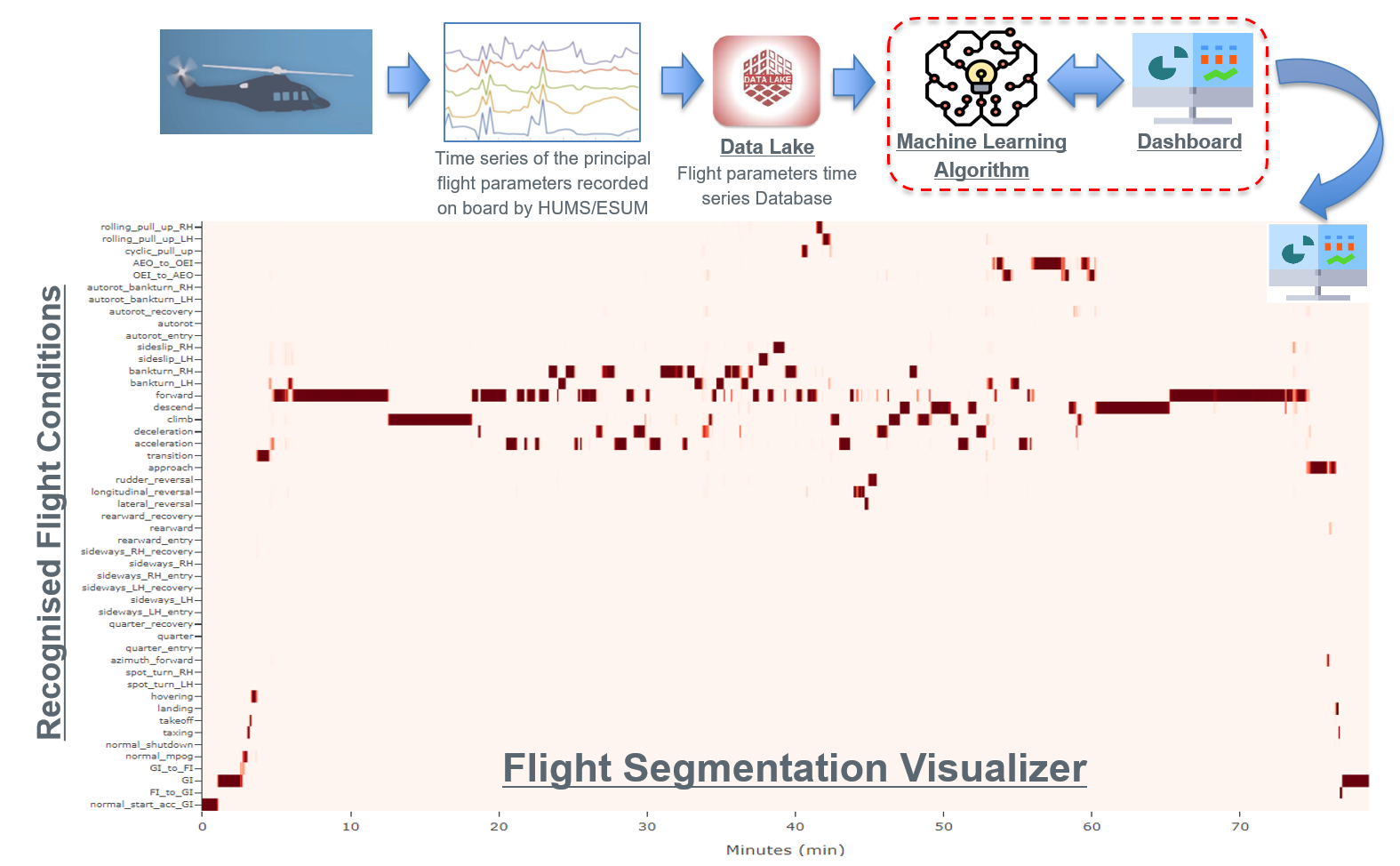
Sophisticated algorithms and new laser amplifiers for future L-DEW systems. Innovations capable of controlling the optical phases of individual sources, improving performance, quality and stability.
CATEGORY: Technology
PROJECT NAME: New laser-phased array and high-power fibre amplifiers for L-DEW
BUSINESS AREA: Electronics
DESCRIPTION
The project covers two key technologies in future L-DEW systems thanks to a partnership between Leonardo Elettronica's production sites in Italy and the UK. A Coherent Beam Combiner (CBC) was designed and developed in Italy with scalable power combining N single laser sources, contributing an intensity N times greater than that of an inconsistent combination. The new high-power fibre laser amplifiers were designed in the United Kingdom for CBC, unlike the units available on the market.
INNOVATION
Unlike other L-DEW systems, this technology controls the optical phases of individual laser sources using an algorithm, for which a patent is pending, capable of establishing a CBC in about 1ms with very low residual phase noise. It also supplies a rapid beam steering mechanism permitting correct modification of the intensity of the laser beam on the target. In addition, unlike products available on the market, the amplifiers developed in the UK have the properties required to improve the performance of the CBC: high beam quality, narrow spectrum, power stability, linear polarisation.
TEAM
Fabrizio Giuseppe Bisesto (Leader) – System Engineer – Pomezia (RM)
Alessandro Perna – Electronics Engineer – Pomezia (RM)
Valentina Sacchieri – System Engineer – Pomezia (RM)
Francesco Coppola – System Engineer – Pomezia (RM)
Alberto Cosentino – Physicist – Pomezia (RM)
Graham Friel – Chief Laser Engineer – Edinburgh, UK
Richard Abram – Lead Laser Engineer – Edinburgh, UK
Patrick Foley – Laser Engineer – Edinburgh, UK
Anupe Karde – Senior Project Manager – Edinburgh, UK
Ross Pringle – Design Engineering Graduate Apprentice – Edinburgh, UK
Andrew Ralph – Senior Mechanical Engineer – Edinburgh, UK
Ian Thomson – Principal Laser Engineer – Edinburgh, UK
Where did the project take place?
The project was implemented by two Leonardo Electronics teams in Pomezia, Italy and in Edinburgh, in the United Kingdom. The Pomezia site, in the province of Rome (700 employees, 807* suppliers and 11,257* people working in related industries), develops Earth observation solutions, laser transmitters, new-generation military cockpits and software for Defined Radio - HF Radio – V/UHF radio – avionic crypto radio and avionic inter communication systems.
How do you think your project can benefit Leonardo’s innovation ecosystem (both within and outside the company)?
Solid know-how and technical skills were acquired in areas of key importance for the future L-DEW in the 100kW class. These technologies and capabilities are already expanding Leonardo’s opportunities in the L-DEW area. The results were taken into consideration by IPR management, and a patent is now pending for our CBC algorithm.
*figure calculated on a regional basis
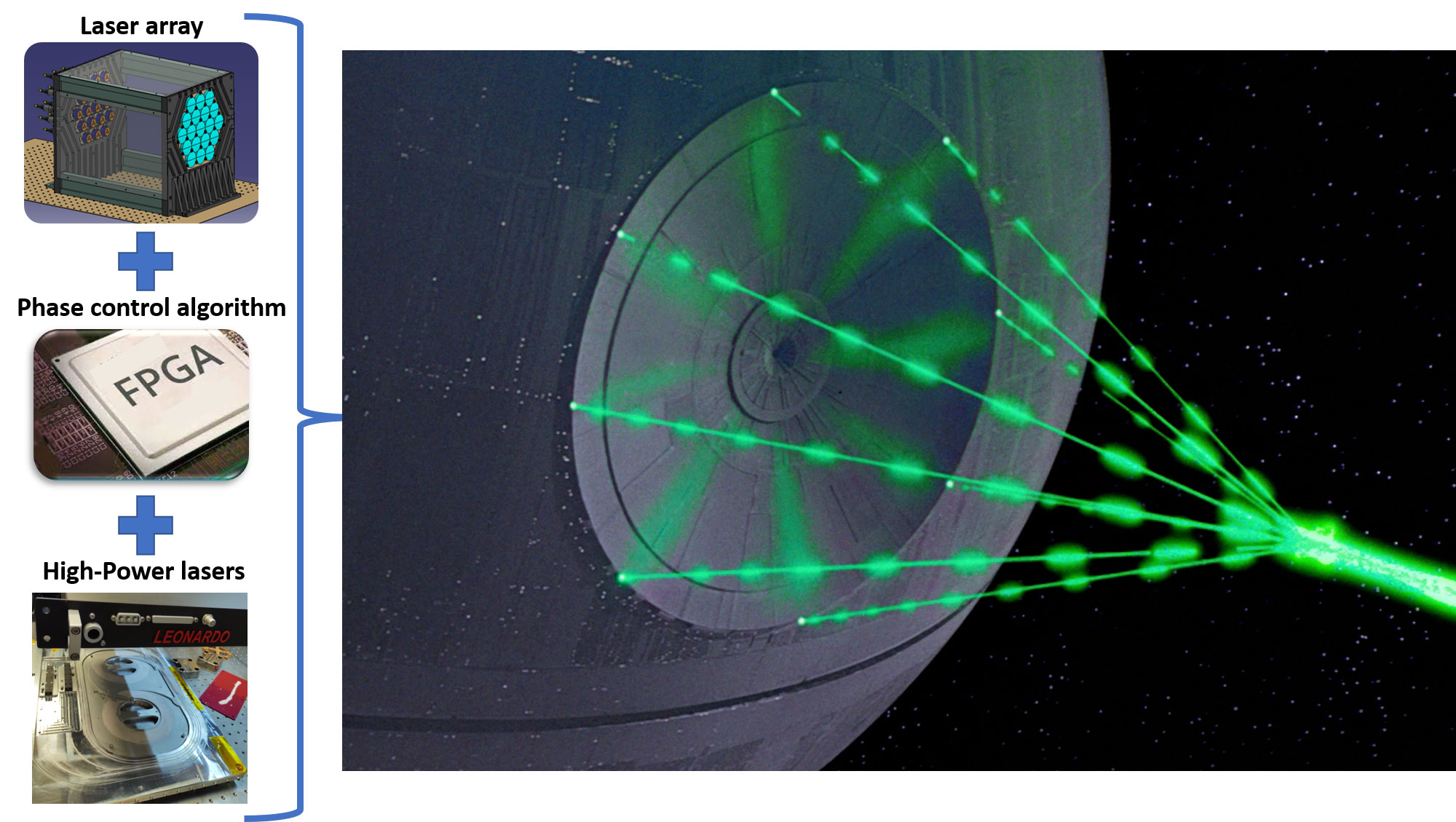
The new energy management method in trial on fixed-wing hybrid and electric propulsion aircraft improves management of electrical loads and reduces fuel consumption.
CATEGORY: Technology
PROJECT NAME: Innovative energy management for future fixed-wing hybrid/electric aircraft
BUSINESS AREA: Aircraft
DESCRIPTION
The project succeeded in defining and experimentally validating innovative energy management rationales permitting “intelligent, dynamic, automatic” management of the increased electrical load of aircraft with hybrid/electric propulsion. These innovative rationales were implemented on a control card (supervisor), and energy management architecture was integrated and tested (at lower power) in the Leonardo Aircraft electrical laboratory.
INNOVATION
Development of energy management in aeronautics has been lacking so far. The test results demonstrated the efficacy of energy management (TRL 5) as the first step towards developing more efficient onboard power management technologies to optimise energy flows and reduce fuel consumption. This innovation is particularly important for future aircraft with hybrid/electric propulsion, in which the electrical load is significantly higher than in conventional aircraft.
TEAM
Fabrizio Cuomo (leader) - Electronic Engineer - Pomigliano d’Arco
Salvatore Nocerino - Engineer
Giovanni Napolitano
Where did the project take place?
The project took place in the Leonardo Aircraft electrical laboratory at the Pomigliano d’Arco site (2,700 employees, 314 suppliers* and 8,564 people* working in related industries), home to the Aerostructures and Aircraft Divisions, specialising in the design, metal bonding and assembly of primary aerostructures and fuselages, complete with systems.
How do you think your project can benefit Leonardo’s innovation ecosystem (both within and outside the company)?
Hybrid/electric propulsion is the most important trend today, and the first essential step towards air transportation decarbonisation. Leonardo Aircraft plays a key role in this field, due to the evident consequences for its proprietary products and therefore the huge industrial impact and competitive edge that will result from such an innovation.
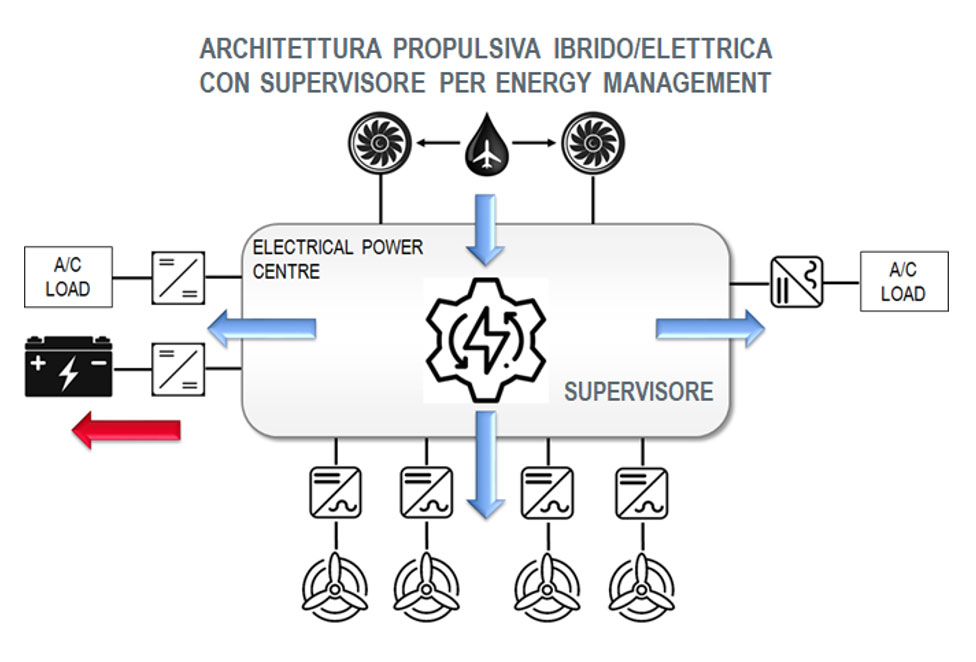
Artificial intelligence and the neural network allow Leonardo smart inspector to identify defects in the materials in aeronautical structures, thus reducing the margin of error and risk.
CATEGORY: Technology
PROJECT NAME: Leonardo smart inspector - System for manipulating and displaying ultrasound signals with automatic identification of problematic zones
BUSINESS AREA: Aerostructures
DESCRIPTION
Design of a proprietary Leonardo software for analysing ultrasound signals, offering advanced signal manipulation and assessment features. The software will also permit automatic detection of flaws in the material through use of a neural network, helping NDI operators in their assessment work.
INNOVATION
Automatic assessment of a UT scan and self-learning through artificial intelligence will permit reduction of the risks attributable to failed identification or underestimation of flaws in aeronautical structures
TEAM
Valerio Dentico (Leader) – Grottaglie (TA)
Where did the project take place?
The project took place in the Leonardo site in Grottaglie, Taranto (1,250 employees, 137* suppliers and 4,467* people working in related industries), concerned with the production and assembly of carbon fibre fuselages for commercial aircraft through use of what is referred to as “One Piece Barrel” technology.
How do you think your project can benefit Leonardo’s innovation ecosystem (both within and outside the company)?
This project will provide Leonardo with proprietary software for non-destructive ultrasound testing, reducing the cost of external licences and opening up new business horizons. Its use will also reduce the occurrence of errors in the assessment of scans.

With the joint use of deep learning algorithms and data clustering, the new system improves performance, reduces costs, and increases reliability.
CATEGORY: Technology
PROJECT NAME: Actuator layout and control dispatch optimization
BUSINESS AREA: Thales Alenia Space
DESCRIPTION
The project concerns applications and extensions of the patent “End-to-end on-orbit servicing” (Thales Alenia Space, 2021) aimed at minimizing the control propellant of on-orbit service spacecraft and the number of thrusters used. Referring to an overall dynamic system (not limited to space), three basic stages are considered: system stabilization, data reduction, and actuator layout optimization. The project stresses the joint use of deep learning, dedicated data clustering, ad hoc mathematical modelling, and advanced optimization.
INNOVATION
The combined technology proposed represents the scientific value of the project. The approach has been successfully adopted for the NGGM (Next Generation Gravity Mission) ESA study (2021). The use of drones in extreme environmental conditions is a possible application in aeronautics. Extensions in further sectors are expected with high potential for industrial impact and competitiveness. The spin-off for products involves energy savings, performance optimization, complexity reduction, cost minimization, and reliability enhancement.
TEAM
Giorgio Fasano (Leonardo's innovation award single participant)
Fellow of The Institute of Mathematics and its Applications (IMA), UK
Chartered Mathematician (IMA) and Chartered Scientist (UK Science Council)
Mathematical modelling and Optimization specialist
Employee of Division / Company: Thales Alenia Space S.p.A.
Place of work, area, job position: Turin, DESI (Domain Exploration and Science Italy)
Operations, Logistics & Mission Support
Where was the project developed?
The project was developed at the Thales Alenia Space headquarters in Turin (695 employees, 400 * suppliers and 7,786 * employees in related industries) which houses a production site specialized in the manufacture of satellites.
How do you expect your project to benefit Leonardo's innovation ecosystem (both internally and externally)?
The project is applicable to several sectors including automation, civil engineering (e.g., intelligent structures), robotics, and aerospace. Further applications include transmission/reception (telecommunications in general), remote sensing (sensors/cameras), pointing systems, environmental monitoring, and illumination.
* data drawn on a regional basis

Through use of Deep Learning, an innovative software processes signals from INAF radar observations and classifies the population of targets in Space.
CATEGORY: Technology
PROJECT NAME: AI4SSA: Artificial Intelligence for Space Situational Awareness
BUSINESS AREA: Vitrociset
DESCRIPTION
The space detritus population is growing continually and represents a potential problem for space vehicles. The project aims to classify space detritus in LEO (low earth orbit) by using advanced Artificial Intelligence (AI) algorithms and especially Deep Learning (neural network). More specifically, an experimental software module has been produced by processing signals supplied by INAF’s lBIRALES bistatic radar observations for classification of targets in space.
INNOVATION
To be able to classify space detritus, the neural network must necessarily be trained using parameters learned previously in a preliminary training phase.
What is innovative about our approach is the way the neural network is trained. For the first time, a simulation was conducted with a bistatic radar, and the data generated was then used to train the neural network to classify space targets.
TEAM
Andrea Garritano (leader) – Computer Engineer – Machine Learning Engineer – Vitrociset – (Rome)
Anna Valli – Communications Engineer – System Engineer – Virociset (Rome)
Antonio Coppola – Electronic Engineer – Vitrociset (Rome)
Silvio Mazzaro – Engineer, Chief Technology Officer – Vitrociset (Rome)
Where did the project take place?
The project began in the former Vitrociset laboratories in Roma Tiburtina, with the aid of the strategic partner INAF (National Astrophysics Institute) and in collaboration with Dr Francesco Benedetto of Roma Tre University.
How do you think your project can benefit Leonardo’s innovation ecosystem (both within and outside the company)?
Applying Deep Learning techniques in Space Situational Awareness represents an innovation in the Leonardo ecosystem, and the results obtained demonstrate the feasibility of our project for targeting new market sectors. It’s important to emphasise that these techniques may be extended to a number of other areas.
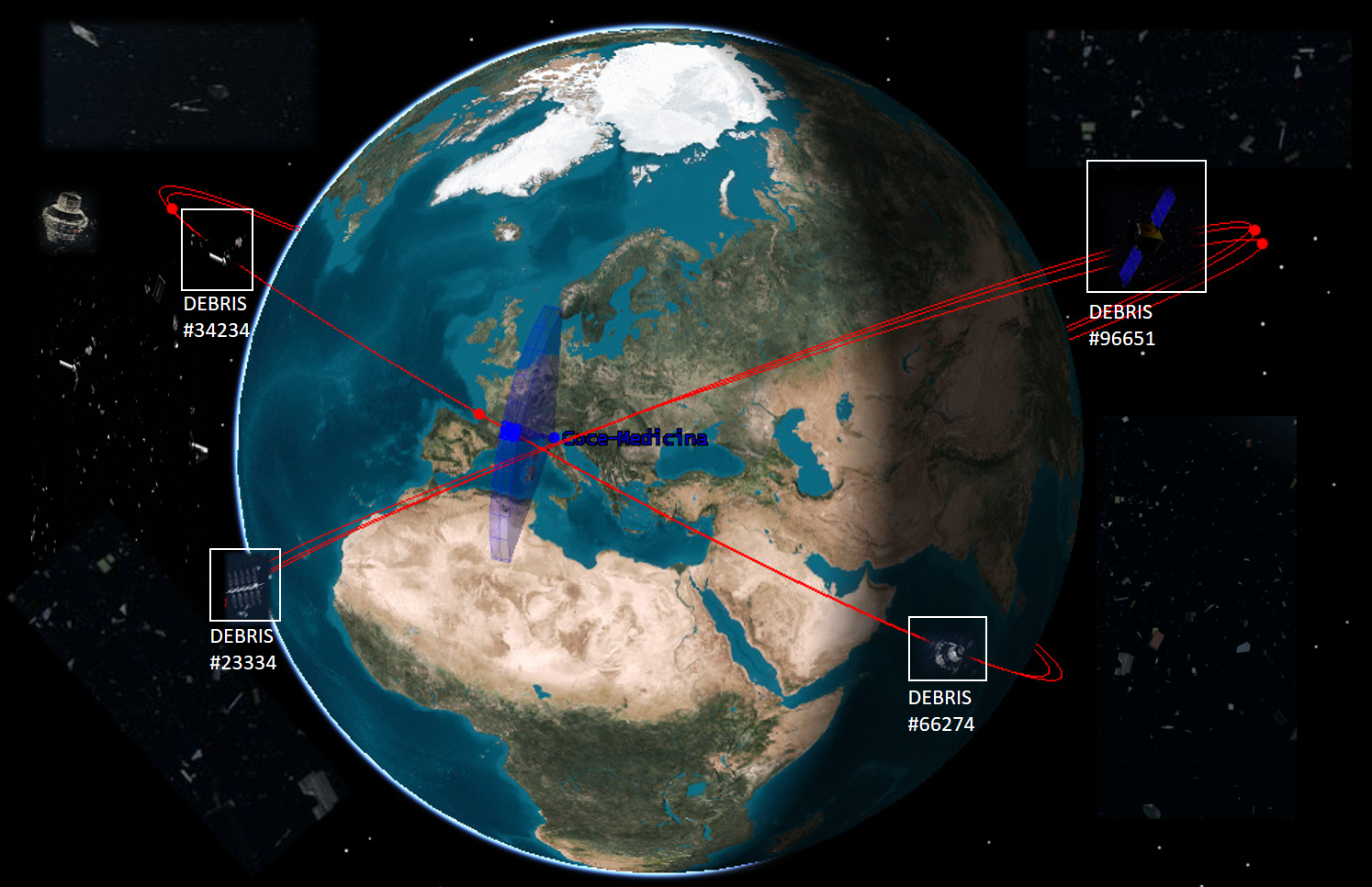
A state-of-the-art interface allows to faithfully represent simulation scenarios for helicopters, combining maritime environments and flight models.
CATEGORY: Technology
PROJECT NAME: Digital Transformation applied to advanced simulation for ship-air-interface
BUSINESS AREA: Helicopters
DESCRIPTION
This achievement is integrating synthetic customer maritime environments with our helicopter products. This is a first fundamental step towards the digital twin transformation vision of undertaking a far greater proportion of crewed and uncrewed rotorcraft development and test in a highly representative simulation environment. The breakthrough is the integration of a physics based digital representation of an AW159 and AWHERO with a digital representation of a Royal Navy Frigate and Aircraft Carrier.
INNOVATION
The original aspect of the achievement is to integrate a total simulation capability and prove effective integration through test. This includes integration of high-fidelity flight models, air wake models, visual models and physical integration with cockpits and loading systems and in a new simulation cell. Upon this complex integration, successful test has been achieved by comparison with real world flight test data and flight testing with Leonardo Flight Test Pilots. This practical achievement has been realised through collaborative working with two external companies and directly with our customer, the UK MOD.
TEAM
Our team was a collaboration of industry and academia and included input from across the Helicopter Division, notably the UK and Italy. Principal contributors:
Edward Goddard (Leader) – Head of Mission Management Systems – Yeovil (UK)
Sean Bignell – Simulation Engineer – Yeovil (UK)
David Cornelius – Simulation Engineer – Yeovil (UK)
Binoy Manimala – Simulation Engineer – Yeovil (UK)
Adrian Alford – Simulation Engineer – Yeovil (UK)
Richard Wilkinson – Simulation Engineer – Yeovil (UK)
Fergus Crawford – Simulation Engineer – Yeovil (UK)
Tim Hardy – Simulation Engineer – Yeovil (UK)
Chris Sandhurst – Simulation Engineer – Yeovil (UK)
Christopher Klein – Graduate Engineer – Yeovil (UK)
Kieron Jay – Technical Lead – Yeovil (UK)
Mark Holton – Technical Manager – Yeovil (UK)
Where was the project developed?
The project was developed at the Leonardo Helicopters headquarters in Yeovil, United Kingdom (3,100 employees, 700 * suppliers and 1,900 * people in related industries), active in the design, development, production and support of helicopters such as the Super Lynx 300, the AW159 Wildcat and the AW101 Merlin.
How do you expect your project to benefit Leonardo's innovation ecosystem (both internally and externally)?
The creation of this simulation environment has already led Leonardo to define a competitive advantage. The work has enabled Leonardo to establish a “Community of Interest”. Leonardo is now looking forward to exploitation of the achievement in a newly awarded contract.
* data drawn on a regional basis
Designed for the AW159 Wildcat, it allows to simulate the control of the aircraft by the crew positioned in the front seat even in challenging scenarios.
CATEGORY: Technology
PROJECT NAME: AW159 Wildcat Manned Uncrewed Teaming (MUM-T) Demonstration
BUSINESS AREA: Infrastructures
DESCRIPTION
Leonardo Helicopters demonstrated the teaming of a small semi-autonomous Fixed Wing UAV with an AW159 Wildcat helicopter in a live trial environment. The aim was to assess the benefits of MUM-T and the workload burden on the existing crew. The team in Yeovil integrated the C2 and Payload data of the UAV directly into the Wildcat tactical system using a STANAG4586 interface. HMI was designed to enable the AW159 front seat crew to control the UAV and it’s EO/IR payload, and display the payload data alongside the Helicopter’s own sensors.
INNOVATION
Uncrewed Systems have proliferated significantly on the battlefield, but whilst they are good at some tasks, they are not so good at others. MUM-T is widely thought to present the benefits of both. The drawbacks of teaming have often been the additional workload of managing uncrewed systems from manned systems without adding more people. Leonardo’s novel approach with a fully integrated solution and easy to use HMI made control and exploitation of the UAV manageable by the existing front seat crew in a busy representative scenario.
TEAM
The team were predominantly system, software, and simulation engineers from the Avionics Department in Yeovil:
Kieron Jay (Technical Team Lead)
Simon Neve (Avionic Systems Integration Lead)
James Kneller (Demonstration and Trials Lead)
Jonathan Read (HMI Requirements)
Ben Carter (Software Team Lead)
Calum McFarlane (HMI Software)
Fraser Hill (Integration Software)
Simon Cox (Integration Software)
Where was the project developed?
The project was developed at the Leonardo Helicopters headquarters in Yeovil, United Kingdom (3,100 employees, 700 * suppliers and 1,200 * employees in related industries) where helicopters such as the Super Lynx 300, AW159 Wildcat and AW101 Merlin are produced.
How do you expect your project to benefit Leonardo's innovation ecosystem (both internally and externally)?
The approach using simulation and a digital twin, provides a strong basis for a much wider application of digital engineering techniques within the Leonardo Ecosystem (Simulation, MBSE and Digital Twins). The underlying innovative approach is also informing the MUM-T requirements for other platforms (e.g., AW249).
* data drawn on a regional basis
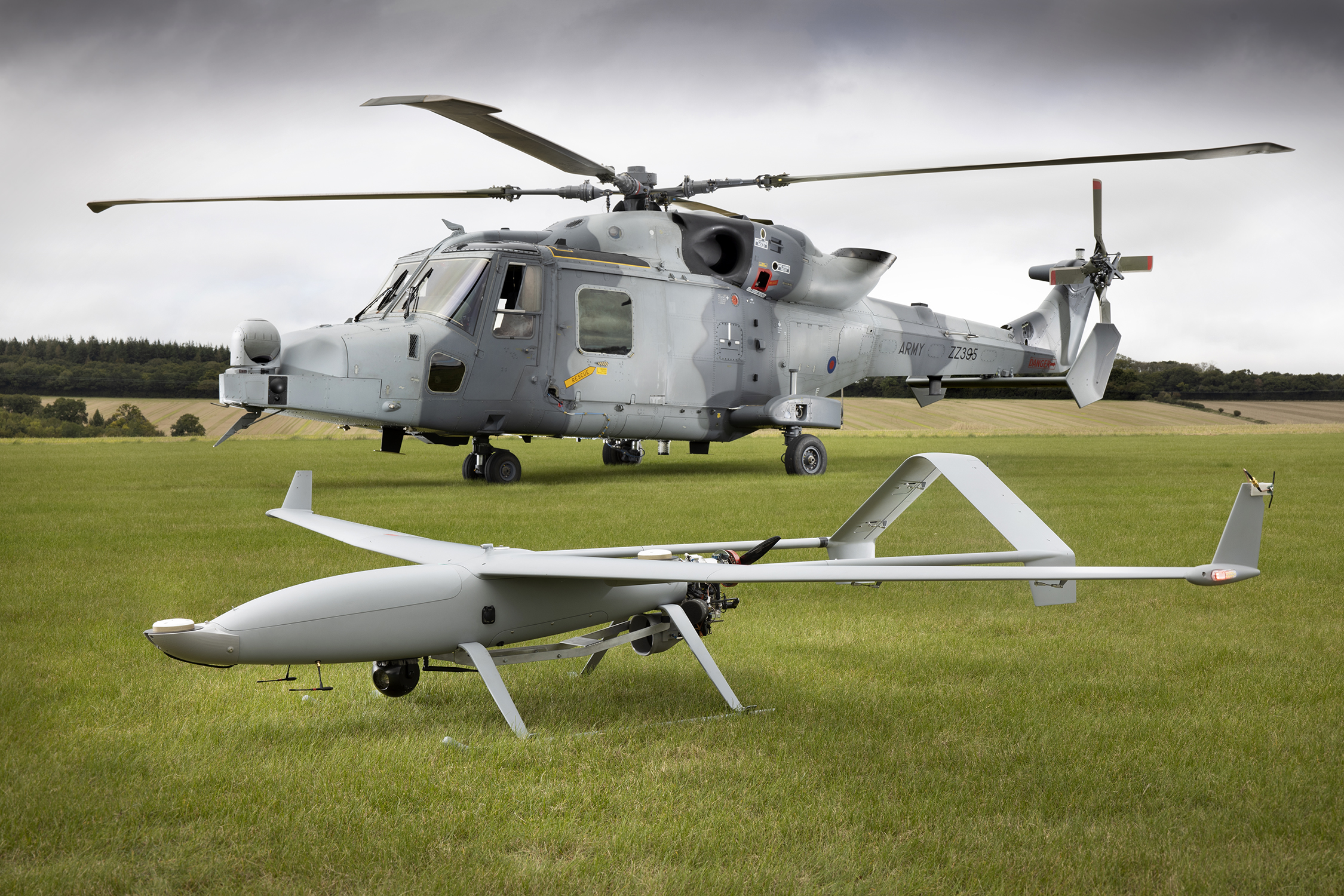
The Lunar Mission Integration Program develops innovative solutions for Moon exploration services. The challenge is how to cut the cost of future missions.
CATEGORY: Technology
PROJECT NAME: Mission Integration Projects for future moon exploration services
BUSINESS AREA: Telespazio
DESCRIPTION
The Lunar Mission Integration Program is all about designing a standardised, financially sustainable Lunar Service infrastructure making use of Earth-Moon COMM & NAV systems. Moreover, it involves an innovative plan for the development of technologies for various space resources (orbiter, landing vehicles, rovers, etc.) and for the earth system, at a time when a growing number of missions and commercial enterprises will be focusing on the lunar economy in the decades to come. The end aim is to address the challenge of cutting the cost of future missions.
INNOVATION
The project creates a new Space Constellation Network Infrastructure supplying communication, navigation and other services for exploration and commercial exploitation of the Moon. Furthermore, it develops advanced earth and space technologies for standardising Moon Comms & Nav. services as a precursor to future Deep Space missions. These innovations are part of the company’s plan for expanding into new markets with convenient, standardised access to opportunities in the lunar economy.
TEAM
Giuseppe Tomasicchio (Leader) – Head of System Engineer – Telespazio, Rome
Carlo Albanese – Tec. Manager – Telespazio, Rome
Luca Andolfi – System Architect – Telespazio, Rome
Davide Apponi – System Specialist – Telespazio, Rome
Massimo Capozzi – Comms Specialist – Telespazio, Rome
Alessandra Ceccarelli – System Architect – Telespazio, Rome
Alessia De Matteis – MBSE Specialist – Telespazio, Rome
Paolo Fortini – Communication Expert – Telespazio, Rome
Fabrizio Paolillo – System Expert – Telespazio, Rome
Filippo Rodriguez – Navigation Expert – Telespazio, Rome
Luca Spazzacampagna – System Architect – Telespazio, Rome
Dario Castagnolo – Space Science Expert – Telespazio, Naples
Koen Geurts – Program Manager – Telespazio, Germany
Where did the project take place?
The project took place in Telespazio’s Rome facility (616 employees, 807* suppliers and 11257* people working in related industries) specialising in the production of satellite solutions and services.
How do you think your project can benefit Leonardo’s innovation ecosystem (both within and outside the company)?
The project creates opportunities for new Space/Ground Technologies and for products and service solutions profoundly affecting the Leonardo Group all over the world, in addition to expanding Telespazio’s portfolio of Communication and Navigation services for the space and lunar economy.
*figure calculated on a regional basis
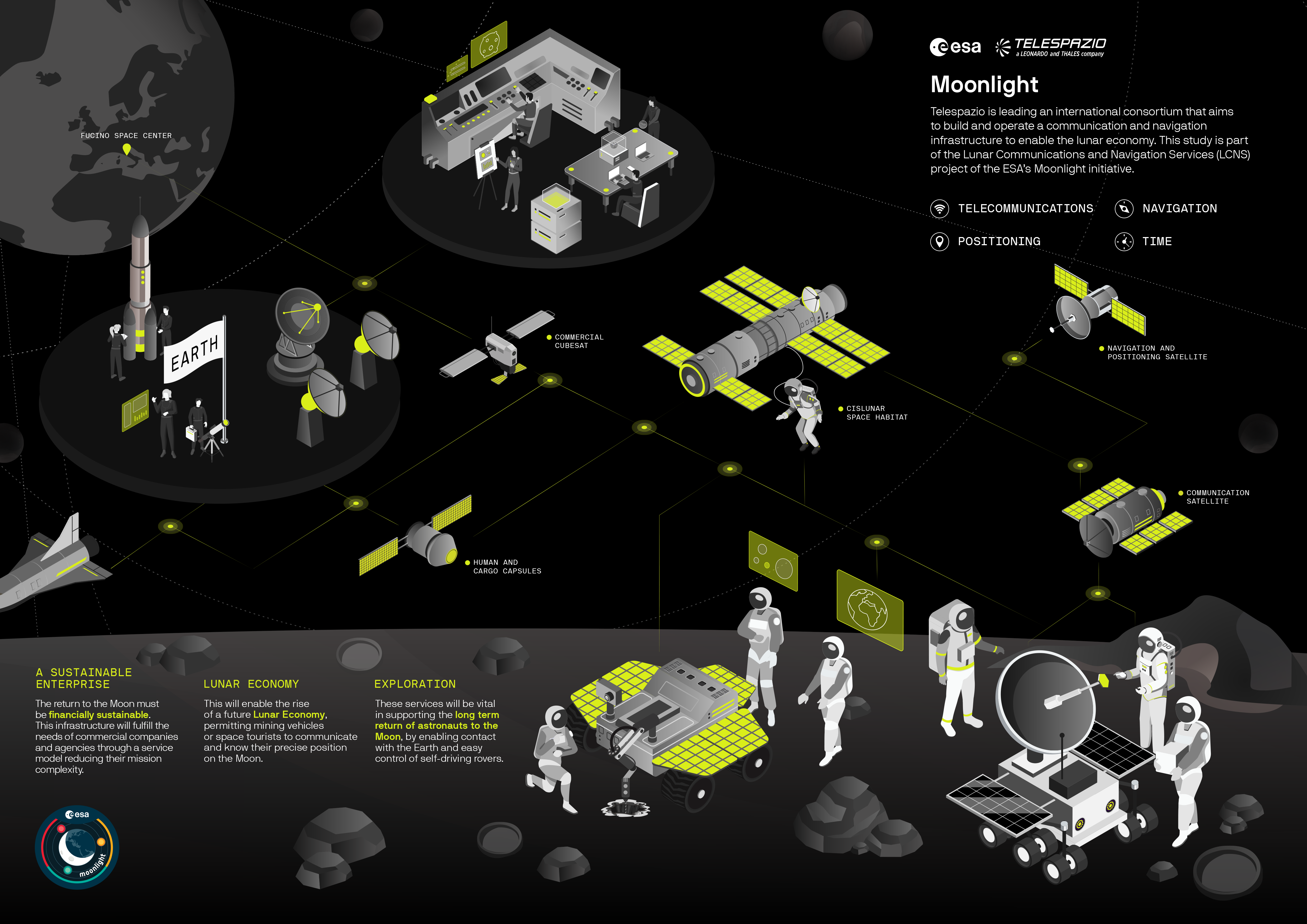
The Q-KMS (Quantum Key Management System) permits management of cryptographic keys generated in the Quantum Layer, guaranteeing utmost security even with the advent of quantum computing.
CATEGORY: Technology
PROJECT NAME: Quantum Key Management System: the voyage of the quantum key, between Earth and Space
BUSINESS AREA: Cyber and Security
DESCRIPTION
The Q-KMS (Quantum Key Management System) is a system under study for the management and delivery of cryptographic keys generated in the quantum layer. A part of the Oqtavo project for the European Quantum Communication Infrastructure (EuroQCI), Q-KMS introduces innovative features guaranteeing maximum security, also for different secrecy classifications and in view of the potential threat to the confidentiality of information represented by the advent of quantum computing (Post-Quantum Cryptography).
INNOVATION
Quantum Key Distribution architecture is undergoing rapid definition and development. It is expected that these networks will see the adoption of quantum repeaters which will considerably lengthen the distance between nodes within the next decade (the current limit is a few hundred km). Independently of this, the Q-KMS permits keys to be delivered over long distances (also by satellite link) with the utmost security (use of the OTP protocol to ensure perfect secrecy).
TEAM
Lorenzo Zamburru (Leader): Engineer - Rome
Claudio Guastamacchia: Mathematician - Rome
Vittore Conte: Engineer - Rome
Where did the project take place?
The project was developed by the Q-KMS team in the Leonardo Cyber & Security Solutions site in Rome (650 employees, 807 suppliers* and 11,257 people* working in related industries), concerned with the design and development of security systems for critical infrastructure, cyber security and complex information systems for central and local public administration.
How do you think your project can benefit Leonardo’s innovation ecosystem (both within and outside the company)?
The EuroQCI (Quantum Communication Infrastructure) is of key importance for the EU’s economic and social development, and has been referred to as a decisive step towards the “Internet of the future”. Q-KMS could therefore offer Leonardo a competitive edge as a technological player.

Designed for aeronautical components, the innovative technology requires fewer raw materials and less energy, resulting in a reduction in environmental impact and production costs.
CATEGORY: Technology
PROJECT NAME: Monolithic multi-rib box with composite material stiffened panels
BUSINESS AREA: Aircraft
DESCRIPTION
The proposal is an innovative manufacturing technique of wing box in composite material with a high degree of integration of its structural components (panels, stringers, ribs) through a co-cure and/or co-bonding process. The technique, thanks to an innovative removable internal tool (core), allows the construction of a closed monolithic structure in a multi-rib configuration, in a closed mold, even in the presence of geometrically complex internal elements that would keep from its extraction from the part.
INNOVATION
Overcoming the limits of the “state of the art” for structural configurations and technologies adopted in the aeronautical field for wing box and empennages: build-up technique (mechanical assembly of loose parts) and co-cue technique of multi-spar box. What makes the difference: closed and complex monolithic structures, lighter; reduction of recurring production costs (elimination of assembly operations); applicability to primary aeronautical structures; applicability to other Leonardo products: helicopters and space.
TEAM
Alberto Russolillo (leader) – Aeronautical designer – Foggia
Francesco Cavaliere – Senior expert operator – Foggia
Gianni Iagulli – Mechanical engineer – Foggia
Marco Raffone – Chemical engineer – Foggia
Tommaso Nanula – Tool maker – Foggia
Giuseppe Totaro – Management engineer – Foggia
Where was the project developed?
The project was developed at the Leonardo Aerostructures Foggia production site (970 employees, 137 * suppliers and 4,467 * related people), specialized in research, design and production of composite parts for civil and military aircraft. (horizontal stabilizer for Boeing 787 and ATR, A220 horizontal and vertical stabilizer, Eurofighter Tuphoon wing, F-35 wing).
How do you expect your project to benefit Leonardo's innovation ecosystem (both internally and externally)?
Environment impact reduction of the industrial production for the aeronautical components and lower polluting emissions from aircraft, thanks to weight reduction of structures, fewer raw materials, and reduction of resources and energy necessary for production. Enhancement of intellectual property for granted patents.
* data drawn on a regional basis
Designed to increase the rotation speed of electrical machinery, ensuring high resistance. An innovative solution applicable in the aerospace and naval sectors
CATEGORY: Technology
PROJECT NAME: High Speed, Maximum Performance Permanent Magnet Rotor
BUSINESS AREA: Leonardo DRS
DESCRIPTION
The new design increases permanent magnet (PM) rotor speed and flux density by approximately 25%. This novel rotor design enables a step change in electric machinery performance, overcoming fundamental limitations of present rotor construction where structure must be separate from electromagnetic poles, consuming a large portion of the electromagnetic gap between the rotor and stator. These enhancements are achieved by leveraging a multi-metallic mechanical retention hoop which is manufactured using hot isostatic press (HIP) processing, enabling high strength bonding of ferromagnetic and non-ferromagnetic metals into a composite structure. Leveraging this ultra-high strength composite structure, electric machinery rotational speed can be increased, enabling smaller and lighter weight motors and generators for targeted applications (e.g., aerospace, navy, etc.
INNOVATION
This patent pending technology advances state-of-the-art performance for electric machinery by enabling high performance permanent magnet motors and generators achieve a rotor surface speed of greater than 1,000 feet per second (existing state of the art is approximately 750 feet per second). Enabling such high surface speeds for permanent magnet technology provides a step change in power density, approximately proportional to the increase in speed (i.e., 25% increase in surface speed capability = 25% improvement in power density).
TEAM
Edgar Thaxton (Leader) – Chief Technology Officer and Vice President Business Development, Fitchburg, MA (USA)
Calvin Corey – Systems Engineer – Fitchburg, MA (USA)
Where was the project developed?
The project was developed at the Leonardo DRS site in Fitchburg (Massachusetts) in the United States where power solutions, focused on rotary machine technology, are designed, developed and manufactured for a wide range of applications. Leonardo DRS employs a total of over 6,700 * employees.
How do you expect your project to benefit Leonardo's innovation ecosystem (both internally and externally)?
The step change in performance afforded by the proposed high speed, maximum performance permanent magnet rotor design is particularly attractive to electric aircraft, submarine and other applications requiring extremely high speed and power dense electric machinery.
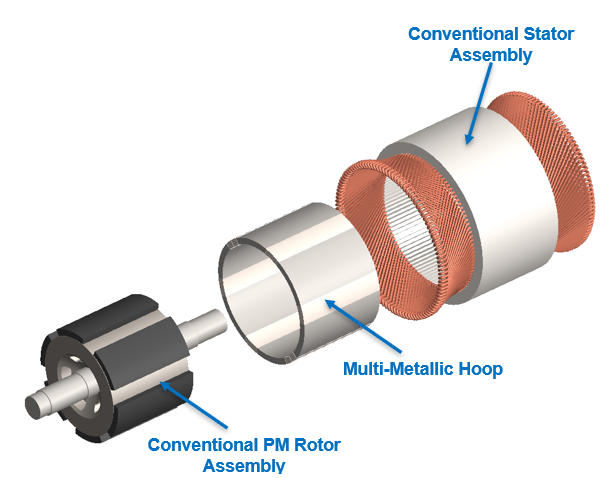
Designed for missile seekers and data transmission systems, these innovative antennas are based on electronic beam scanning without phase shifters, thus cutting costs.
CATEGORY: Technology
PROJECT NAME: Liquid crystal antennas: a new antenna technology
BUSINESS AREA: MBDA
DESCRIPTION
The innovative antenna features electronic beam scanning without phase shifters, employing liquid crystal technology. This simple, economical solution can be used on missile seekers and, above all, on data transmission systems. The antenna consists of an array of micro-strip powered patches with an interposed narrow channel filled with liquid crystal. Tracking is controlled by applying tension to the liquid crystal.
INNOVATION
What is innovative about this project is the use of liquid crystal technology, widely employed in television and computer screens, in place of phase shifters. This extremely simple, economical technology is not subject to ITAR restrictions, and can replace complex, expensive electronic phase shifters.
TEAM
Roberto Vitiello (Leader) – Hardware Engineer – MBDA Fusaro (NA)
Giovanni Petraglia – Hardware Engineer – MBDA Fusaro (NA)
Giuliana D’Alterio – Hardware Engineer – MBDA Fusaro (NA)
Fabio Pascariello – Hardware Engineer – MBDA Fusaro (NA)
Gaetano Prisco – Hardware Engineer – MBDA Fusaro (NA)
Giorgio Giordanengo – Links Foundation – Turin
Giuseppe Vecchi – Links Foundation – Turin / Politecnico di Torino
Rossella Gaffoglio – Links Foundation – Turin
Where did the project take place?
The project took place in the MBDA Fusaro site in Bacoli, in the province of Naples (over 500 employees, 335* suppliers and 8564* people working in related industries), concerned with the design, development and production of missiles and missile systems for all types of platforms and for the main market sectors.
How do you think your project can benefit Leonardo’s innovation ecosystem (both within and outside the company)?
The project could lead to the development of low-cost data-link antennas for missile applications or space telecommunications.
*figure calculated on a regional basis
